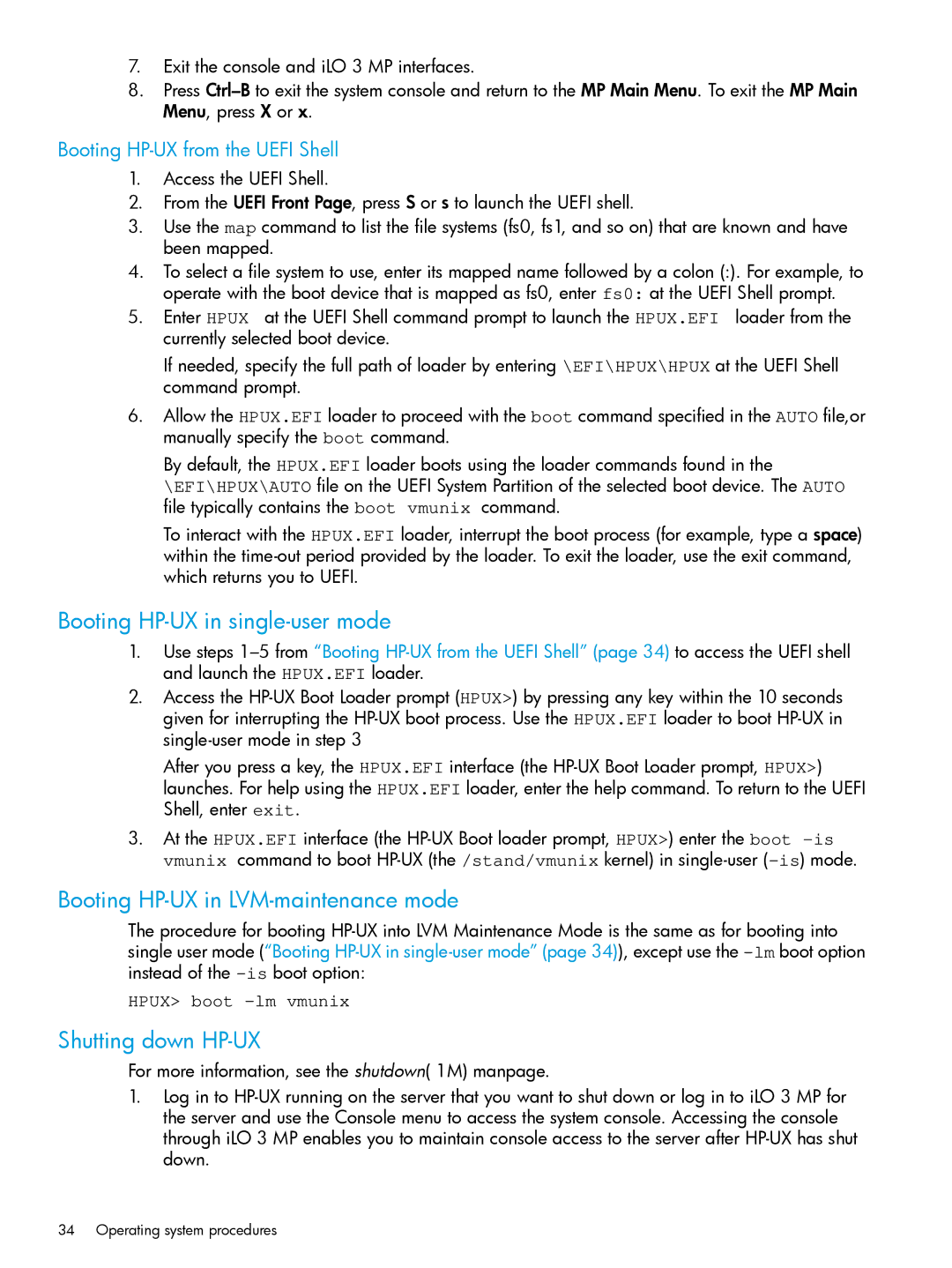7.Exit the console and iLO 3 MP interfaces.
8.Press
Booting HP-UX from the UEFI Shell
1.Access the UEFI Shell.
2.From the UEFI Front Page, press S or s to launch the UEFI shell.
3.Use the map command to list the file systems (fs0, fs1, and so on) that are known and have been mapped.
4.To select a file system to use, enter its mapped name followed by a colon (:). For example, to operate with the boot device that is mapped as fs0, enter fs0: at the UEFI Shell prompt.
5. Enter HPUX at the UEFI Shell command prompt to launch the HPUX.EFI loader from the currently selected boot device.
If needed, specify the full path of loader by entering \EFI\HPUX\HPUX at the UEFI Shell command prompt.
6.Allow the HPUX.EFI loader to proceed with the boot command specified in the AUTO file,or manually specify the boot command.
By default, the HPUX.EFI loader boots using the loader commands found in the \EFI\HPUX\AUTO file on the UEFI System Partition of the selected boot device. The AUTO file typically contains the boot vmunix command.
To interact with the HPUX.EFI loader, interrupt the boot process (for example, type a space) within the
Booting HP-UX in single-user mode
1.Use steps
2.Access the
After you press a key, the HPUX.EFI interface (the
3.At the HPUX.EFI interface (the
Booting HP-UX in LVM-maintenance mode
The procedure for booting
HPUX> boot
Shutting down HP-UX
For more information, see the shutdown( 1M) manpage.
1.Log in to
34 Operating system procedures
